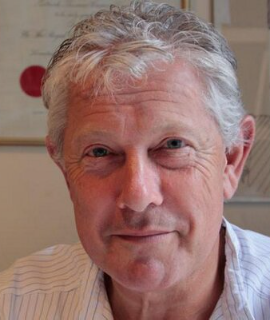Title: Temporomandibular dysfunction - The great imposter
Abstract:
TMD is a subject of enormous significance, all too often misdiagnosed. Controversies surrounding TMD has caused many clinicians to shy away from treating these patients. This presentation, including several clinical cases will cover the following:
- signs/symptoms of TMJ disorders
- the importance of measuring TMJ function/range of motion
- intracapsular and extracapsular disorders
- the role and importance of MRI (static and dynamic)
- neurological/otological and musculoskeletal manifestations of TM disorders
- intraoral orthotics for the treatment of TMD
- nocturnal parafunction and the use of abi-maxillary appliance versus a single arch appliance
TMD is all too often overlooked in clinical practice and yet closely associated with head, neck and facial pain. Seemingly unrelated symptoms straddle the disciplines of medicine, neurology, ENT medicine, physical medicine, dentistry and psychiatry and therefore it is not surprising that TMD cannot be pigeon-holed into any category, dental/medical or surgical. The major symptoms of TMD include Head pain predominantly in the forehead, temple and occipital regions. This occurs in young children as well as adults. 10% of the population have tension-type headaches at least once/week and 30% of neurology referrals are for headache. Retroorbital pain Vertigo/dizziness/light-headedness Tooth pain Neck pain/stiffness Limited mouth opening - with clicking, locking and crepitus Treatment for TMD falls into two categories, namely therapeutic and palliative. Therapeutic treatment aims to correct the underlying disorder and in doing so, symptoms are also addressed, that is to say, this approach addresses the patient’s signs and not just the symptoms. The most challenging cases of TMD are those with a so-called internal derangement whereby the intra-articular disc is displaced on mouth opening and closing. Treatment involves the use of an intra-oral orthotic and in selected cases combined with a surgical procedure (disc plication) to stabilise the discs. Palliative treatment may alleviate the symptoms but cannot restore normal anatomy or correct the pathology. It includes medication, injections, soft splint, physical therapy, pain management, lifestyle changes, counselling. Given the complexity of accurate diagnosis and treatment of TMD there is a need for a team approach to caring for these patients including the following disciplines :
- dentistry
- orthodontics
- surgery
- medicine/pharmacology
- physical therapy including acupuncture and chiropractics
- neurology
- psychology/ counselling/CBT
By taking all these factors into account, the biopsychosocial model of health is addressed.




